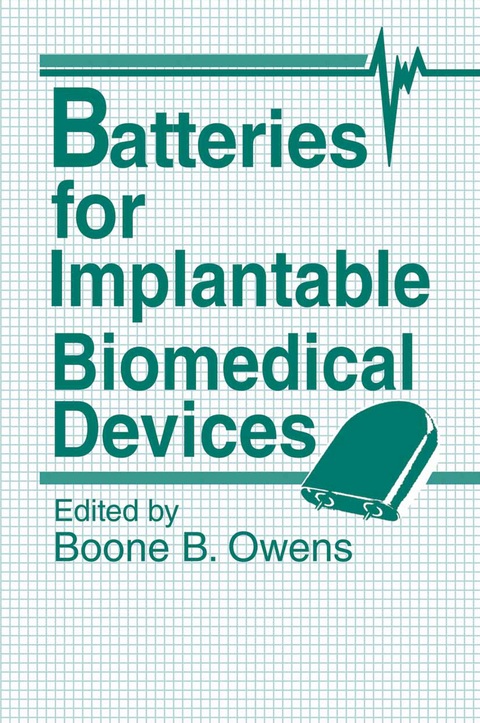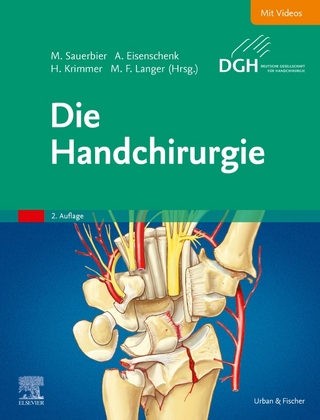
Batteries for Implantable Biomedical Devices
Springer-Verlag New York Inc.
978-1-4684-9047-3 (ISBN)
1. Electrically Driven Implantable Prostheses.- 1. General Background.- 2. Devices Background.- 3. Business Aspects.- 4. Future Directions.- References.- 2. Key Events in the Evolution of Implantable Pacemaker Batteries.- 1. Introduction.- 2. An Interview with Samuel Ruben.- 3. An Interview with Wilson Greatbatch.- References.- 3. Lithium Primary Cells for Power Sources.- 1. Introduction.- 2. The Elements of a Battery.- 3. Battery Parameters.- 4. Battery Performance.- 5. Microcalorimetry.- 6. Implantable Battery Chemistries.- References.- 4. Evaluation Methods.- 1. Evaluation Objectives.- 2. Accelerated Testing.- 3. Nonaccelerated Testing.- 4. Qualification Protocol.- 5. Data Analysis.- References.- 5. Battery Performance Modeling.- 1. Description of the Problem.- 2. Importance of the Solution.- 3. Description of the Variables and Relationships.- 4. Classification of Models.- 5. Statistical Methods.- 6. Modeling of the Lithium/Iodine Pacemaker Battery.- 7. Device Longevity.- 8. Conclusion.- References.- 6. Lithium/Halogen Batteries.- 1. Introduction.- 2. General Features of Lithium/Halogen Solid Electrolyte Batteries.- 3. The Lithium/Bromine System.- 4. Chemistry of the Lithium/Iodine-Poly vinylpyridine System.- 5. Construction of Lithium/Iodine-PVP Cells.- 6. Discharge Characteristics of the Li/I2-PVP Battery.- 7. Performance of the Li/I2-PVP Cell.- 8. Summary and Conclusion.- References.- 7. Lithium Solid Cathode Batteries for Biomedical Implantable Applications.- 1. Introduction.- 2. General Features of Lithium Solid Cathode Systems.- 3. Specific Systems Used for Biomedical Applications.- 4. Use of Lithium Solid Cathode Systems in Implanted Medical Devices.- 5. Summary and Conclusions.- References.- 8. Lithium-Liquid Oxidant Batteries.- 1. Introduction.- 2. Description of the System.- 3. Capacity and Energy Density.- 4. State-of-Discharge Indication.- 5. Voltage Delay.- 6. Safety.- References.- 9. Mercury Batteries for Pacemakers and Other Implantable Devices.- 1. Background.- 2. Chemistry.- 3. Cell Design and Performance Characteristics.- References.- 10. Rechargeable Electrochemical Cells as Implantable Power Sources.- 1. Introduction.- 2. Nickel Oxide/Cadmium Cells.- 3. Rechargeable Mercuric Oxide/Zinc Cells.- 4. Prospects for Future Use of Rechargeable Cells.- References.- 11. Nuclear Batteries for Implantable Applications.- 1. General Description of Nuclear Batteries.- 2. Isotope Selection.- 3. Detailed Characteristics of the Plutonium-238 Isotope.- 4. Thermoelectric Generator Systems.- 5. Thermopile Design.- 6. Insulation Design and Selection.- 7. Fuel Capsule Design.- 8. Thermal Analysis.- 9. Electrical Characteristics.- 10. Radiation Effects.- 11. Licensing Requirements.- 12. Applications of Nuclear Batteries.- 13. Nuclear Battery Reliability.- References.
| Zusatzinfo | 81 Illustrations, black and white; 380 p. 81 illus. |
|---|---|
| Verlagsort | New York, NY |
| Sprache | englisch |
| Maße | 152 x 229 mm |
| Themenwelt | Medizinische Fachgebiete ► Chirurgie ► Ästhetische und Plastische Chirurgie |
| Medizin / Pharmazie ► Physiotherapie / Ergotherapie ► Orthopädie | |
| Naturwissenschaften ► Chemie ► Physikalische Chemie | |
| Technik ► Medizintechnik | |
| ISBN-10 | 1-4684-9047-8 / 1468490478 |
| ISBN-13 | 978-1-4684-9047-3 / 9781468490473 |
| Zustand | Neuware |
| Haben Sie eine Frage zum Produkt? |
aus dem Bereich


